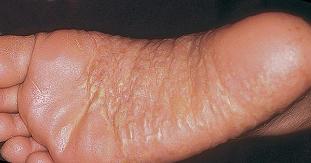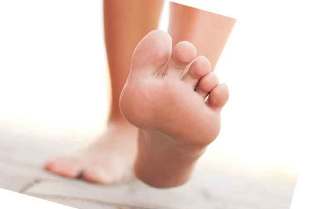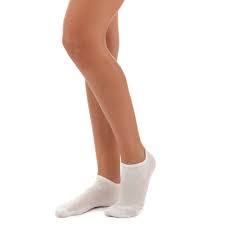Palmo-plantar psoriasis affects the palms of the hands and the soles of the feet, and the disease itself is a disease, an autoimmune disease.

Psoriasis on the palms of the hands and the soles of the feet, as well as the localization of the process on the scalp, is considered to be one of the most common forms of the disease. It represents approximately 14% of the cases, the pathological condition of the skin.
The causes of the evolution of the disease
Although for palmo-plantar form of psoriasis is not a proper binding age, in the range of 15 to 35 years had the greatest rate of development of the disease. A and the link with ethnicity. It is reported that among persons who are nationals of caucasian over the age of 50 years significantly increases the risk of developing this pathology.
The exact causes of the condition up to the end has not been elucidated, and to date, it is believed that the disease is an autoimmune process. During normal operation of the immunity, the human receives protection against a variety of agents that are exotic: viruses, allergens, protozoa, and other micro-organisms.
In the case of psoriasis occurs a defect in the body, after which the immune system begins to produce substances aggressive against own cells and tissues. The excess of the number of T lymphocytes (immune cells) and macrophages leads to the development of the inflammatory reaction and the excess proliferation of skin cells, it can occur summary of the symptoms and the appearance of hyperkeratosis.
Note! Hyperkeratosis is an excessive thickening of the epidermis — the outer layer of the skin.
Some studies suggest a role of the factor of heredity. For example, about 10% of the population inherit the genes associated with psoriasis and only 3% of them develops the disease. These statistics are pushing the idea of the existence of other, more important causes of the disease.
Other risk factors are the following:
- The stress and emotional lability (sensitivity).
- Smoking and the consumption of drugs.
- Background of the disease, which has an impact on immunity.
- Frequent Infections wounds and cuts on the palms and soles.
In a 2006 study, it was shown on the link skin disease with diseases of the cardio-vascular and other diseases: hypertension, diabetes, and hyperlipidemia.
The results of these experiments to the end were not clear. For a complete understanding of all processes, the study of this topic continues and additional research is needed.
The triggers of the disease (factors of the pathology, but did not lead to itself) can be the following:
- Sunburn;
- Insect bites;
- Exposure to an allergen;
- General bacterial infections, such as pneumonia or angina;
- Viral diseases, including HIV infection;
- The inflammatory state of varying degrees of severity: bronchitis, nasopharyngitis;
- Severe alcoholic intoxication;
- Obesity.
The diagnosis of palmo-plantar psoriasis

Despite the rapid development of modern medicine, up to now, the fixing of the psoriasis on the palms of the hands may be during the visual examination the doctor without special equipment. Based on the physical examination on the "psa " triad", a manifestation of which we observe with a light scrape scales with the affected areas of the body.
The doctor draws attention to the history of the disease, as some constantly taken medications can be triggers of the development of the disease:
- Indomethacin and other nonsteroidal anti-inflammatory drugs (NSAIDS);
- Lithium and anti-malarial medications;
- Sharp cancellation of glucocorticoids;
- The reception of penicillin, hydroxychloroquine.
In difficult cases, it is recommended that a comprehensive study, which includes a laboratory analysis of blood and the scanning of the ultrasound, as well as the exclusion of a fungal infection using mycological diagnosis. Testimonies conducted a biopsy suspicious of the outbreak of the skin.
The symptoms and the first signs of palmo-plantar psoriasis
One of the main types of the disease, there are five variants. In 90% of cases there is a visual feature of the clinic.
Looks like palmo-plantar psoriasis? The patient on the palms and soles are defined psoriatic plaques of red, scaly skin that is thickened, prone to flaking. In the homes, one feels itching, fever, and pain of varying intensity; in some cases, the skin will crack and bleed.
Consequences on the formation of the nails:
- In nail plates may appear to be defects, holes;
- The nail thickens and fade;
- Changes its form.
Palmo-plantar view of the disease occurs, as a part of the process, but is limited only by the skin of the hands and feet. Psoriasis of the soles difficult to walk and wear shoes. The damage on the hands can interfere not only with the completion of a work, but to impose negative impact on the relationships with people. Everyday situations, like a welcome hand, can be unsightly, which leads to confusion and social anxiety of man in the development of social phobia.
The peculiarity of this form of the disease is the presence of varieties of processes that can be the following terms:
- Palmo-plantar are pustular psoriasis Barbera;
- Purulent psoriasis;
- Pustular dermatitis.
Listed a disorder of the skin causes the formation of clusters (cluster) of different pustules in the area of the plates. In general, this eruption is very similar to the acne normal. It is to be noted that this variant of the disease is fairly persecution the lungs of the methods of treatment and often requires an integrated approach to therapy.
Attention! Are the pustular psoriasis of the palms of the hands and soles of the feet requires a treatment of antibacterial drugs at the time of accession to a bacterial infection.
Stage palmo-plantar psoriasis

Like all forms of one pathological process, palmo-plantar localization is characterized by three clinical phases:
- The initial phase. The appearance of lesions on the hands and feet. The pads have the characteristic of a red hue, there may whitish purulent inclusion; the patient is worried about the intense itching. The elements of the eruption are based in large homes. Their number depends on the characteristics of the evolution of the disease.
- The phase of stabilization. The state is not making progress, new elements of pathological are not trained, but most still intact. The itching gradually disappears, and the colouring of the plates is less bright.
- The final phase. Accompanied by a significant decline elements, to itch missing. The treatment is compatible to be excluded from any; make recommendations on the conservation of remission and prevention of recurrence.
In some cases, the disease is classified by elements of the rash:
- The usual form — a typical manifestation on the skin;
- Horn the form, together with a hyperkeratosis and the typical red spots a little, or they do not exist;
- The Form Of The Barbera.
The methods of treatment
Palmo — plantar psoriasis is a chronic disease that can appear again, regardless of the treatment. However, there are treatments to reduce the period of exacerbation and the prolongation of the period of remission.
The main method of treatment is to try not to allow the rapid growth of the cellular elements which lead to the development of atherosclerotic plaques, conducted anti-inflammatory therapy. The Alternative technique offers the direct elimination of scales.
Because the skin on the palms and soles of thickened even in people in good health, the treatment of this localization often involves the combination of methods and the more aggressive effects on households.
In the first place in psoriasis, the palms and the soles of the feet is assigned to a topical treatment in the form of gels, ointments and creams:
- The vitamin D analogues;
- Ointments of corticosteroids;
- Retinoids;
- Anthralin;
- Special of the resin;
- Salicylic acid;
- Moisturizers to reduce the swelling and relieve the inflammation.
Classic, side-effects are irritation, drying and thinning of the skin. In addition can be performed in sessions of phototherapy:
- Natural the sun's ultraviolet rays;
- Artificial ultraviolet radiation using special devices;
- The excimer laser;
- The photochemotherapy.
It is important to know!Very important the natural transition of the phototherapy. It is recommended to start with 5-10 minutes of direct sunlight per day. Then, you can gradually increase the exposure time of 30 seconds per day.
Drugs for the treatment of palmo-plantar psoriasis
Palmo-plantar psoriasis involves the treatment of the oral medication during a more severe form of the disease:
- The methotrexate;
- Retinoids;
- Cyclosporine;
- Biologic drugs reduce the activity of the immune system;
- Thioguanine;
- The hydroxyurea.
The most common side effects called drug are problems with the gastrointestinal tract.
The course of the disease and the prevention
Heavy course of the disease to a certain extent, can influence the development of serious conditions that threaten the health and life of the patient: a 58% increased risk of myocardial infarction and 43% of the stroke. The major immediate complications psoriasis of the hands and soles of the feet is psoriatic arthritis and nail dystrophy.
National medical research center has named a number of diseases which may depend on the pathology:
- The attendant of the auto-immunity of the state: Crohn's disease, celiac disease, sarcoidosis, and others;
- Eye diseases: cataracts and glaucoma, as well as the infectious process;
- Increase of the blood pressure;
- Parkinson's Disease;
- Diabetes mellitus;
- Diseases of the liver and of the kidney;
- Osteoporosis;
- Depression.
On the note.When the early treatment and adherence to the guidance, a flooding of psoriasis can be reduced and skin manifestations minimize.
Recommended measures of prevention:

- Take baths daily with natural oils, salts and mild soap, does not contain artificial flavors and dyes;
- Use a moisturizer for the skin (in severe cases, twice a day), especially after making water treatment. Is not allowed the use of stringent towels. Simply attach to the skin with a soft, dry cloth, and then use the cream;
- Get a sufficient amount of light from the sun. You need to consult your doctor and choose the "just middle". Too low insolation will not provide a noticeable effect, and too intense — increases the risk of developing cancer of the skin;
- Avoid triggers, such as smoking, alcohol consumption, stress, and infections;
- Use the aloe juice. You must perform compresses on the damaged areas of the skin several times a day. The official study proving the efficacy of this plant in the fight against the inflammatory processes of the skin;
- Get at least three grams of omega-3 fatty acids per day. Include in the diet of fish, nuts, flax oil, or use fish oil capsules. The fatty acids reduce inflammation in the body;
- Assist in taking some special supplements on the basis of the barberry, tea tree oil or Dead sea salt.
























